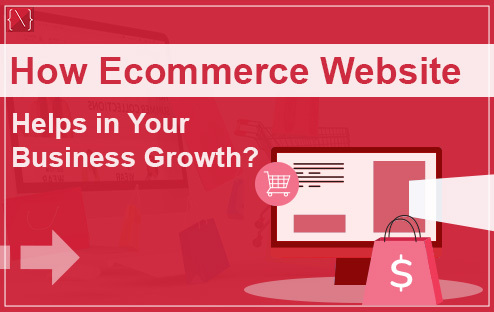
Nowadays, having an online presence has become an integral part of running a successful business. One of the most effective ways to establish an online presence and ensure growth is through an ecommerce website. An ecommerce website allows businesses to sell products or services online, reaching a wider audience and tapping into the ever-growing online market. In this blog post, we will discuss how an ecommerce website can help your business grow and succeed.
- Increased Reach and Accessibility
One of the biggest advantages of having an ecommerce website is the ability to reach a larger audience. Unlike a physical store, an online store can be accessed by people from all around the world, regardless of their geographic location. This opens up immense opportunities for businesses to expand their customer base and increase sales. With an ecommerce website, your business is no longer limited to a single location or demographic. Customers can conveniently browse and purchase your products or services at any time, from the comfort of their own homes or on-the-go.
- 24/7 Sales
Another significant benefit of having an ecommerce website is the ability to generate sales 24/7. Unlike traditional brick-and-mortar stores that have limited working hours, an online store is always open. This means that potential customers can make purchases at any time, even outside of regular business hours. Whether it’s late at night or during holidays, your ecommerce website allows customers to shop whenever it suits them. This constant availability can significantly increase your sales and revenue.
- Cost-Effective
Compared to setting up and maintaining a physical store, an ecommerce website is a more cost-effective option for businesses. Physical stores require investments in real estate, utilities, inventory, and staff, among other expenses. On the other hand, an ecommerce website eliminates the need for a physical space, reducing overhead costs significantly. Additionally, marketing and advertising efforts for online stores can be more targeted and cost-effective compared to traditional advertising methods. With an ecommerce website, you can reach a larger audience for a fraction of the cost.
- Enhanced Customer Engagement
Having an ecommerce website allows businesses to engage with their customers in a more personalized and interactive manner. Through features such as live chat, email newsletters, and social media integration, businesses can connect directly with their customers. This enables better customer support, quick response times, and the ability to build long-lasting relationships. The ability to collect customer data and feedback also allows businesses to personalize their offerings and provide a tailored shopping experience.
- Analytics and Insights
One of the most valuable aspects of an ecommerce website is the ability to track and analyze customer behavior and preferences. Analytics tools and metrics provide businesses with valuable insights into customer trends, popular products, and overall website performance. This data can be used to make informed business decisions, refine marketing strategies, and optimize the customer shopping experience. By understanding customer behavior and preferences, businesses can continuously improve their offerings and stay ahead of the competition.
- Scalability and Flexibility
As your business grows, so does the need for scalability and flexibility. An ecommerce website provides businesses with the ability to easily scale up or down based on demand. With the click of a button, you can add new products, update pricing, and expand your offerings. Additionally, an ecommerce website allows businesses to adapt quickly to market trends and customer preferences. This agility gives businesses a competitive edge and enables them to stay relevant in a rapidly changing business landscape.
Conclusion
In today’s digital age, an ecommerce website is no longer a luxury but a necessity for businesses looking to grow and succeed. From increased reach and accessibility to cost-effectiveness and enhanced customer engagement, an ecommerce website offers a myriad of benefits. By leveraging the power of online selling, businesses can tap into a global market, generate sales 24/7, and gain valuable insights into customer behavior. With a well-designed and user-friendly ecommerce website, your business can thrive in the online world and experience significant growth. Embrace the potential of ecommerce and take your business to new heights!
Need Help Building Your Ecommerce Website?
Look no further than CLEONIX TECHNOLOGIES, a leading ecommerce website development company in Kolkata. Our team of experienced developers can create a custom-designed online store that caters to your specific needs and helps you achieve your business goals. Visit online or contact us today to discuss your project and get started on your journey to ecommerce success.
ALSO READ: Digital marketing and Ecommerce- How are they related to each other?
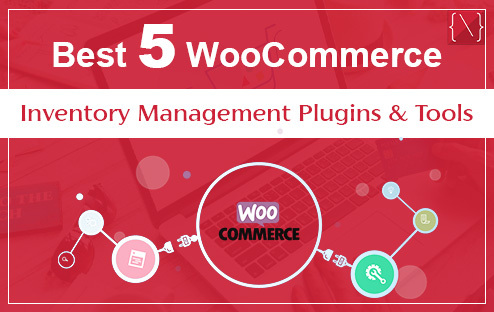
Running a WooCommerce store is an exciting venture, but efficient inventory management is crucial for its success. Manually tracking stock levels can quickly become overwhelming as your business grows. Fortunately, a plethora of fantastic WooCommerce inventory management plugins and tools exist to streamline this process. This blog post will explore the top 5 options to empower you to take control of your inventory and keep your store running smoothly.
Essential Features to Consider:
Before going through the specific plugins, let’s explore some key features to prioritize in your inventory management solution:
- Low Stock Alerts: Be notified when product quantities dip below a predefined threshold to prevent stockouts and ensure a seamless customer experience.
- Multi-location Support: Manage inventory across various warehouses or retail locations, enhancing operational efficiency for businesses with a physical presence.
- Product Variation Management: Effectively track stock levels for products with multiple variations (size, color, etc.), crucial for businesses offering a diverse product range.
- Reporting and Analytics: Gain valuable insights into inventory performance, sales trends, and customer preferences. This data empowers you to make informed decisions regarding stock levels, purchasing, and marketing strategies.
Top 5 WooCommerce Inventory Management Solutions:
- ATUM Inventory Management for WooCommerce:-
ATUM stands out as a comprehensive and free inventory management solution for WooCommerce stores. It boasts a user-friendly interface and supports various product types, including simple products, variations, grouped products, and external products. ATUM offers features like bulk editing, purchase order management, reporting, and low stock alerts, making it a powerful free option for businesses of all sizes.
- Smart Manager for WooCommerce:-
This feature-rich plugin caters to stores managing large or complex inventories. Smart Manager excels in bulk editing capabilities, allowing you to efficiently update stock levels, prices, and other product information across numerous items. It also provides functionalities like low stock alerts, purchase order management, and insightful reporting to give you a clear view of your inventory health.
- WooCommerce Multi-Location Inventory Management:-
If you operate with multiple warehouses or retail locations, this premium plugin is a game-changer. WooCommerce Multi-Location Inventory Management streamlines stock management across various locations. It enables you to track inventory levels for each location, set up automatic stock transfers, and even showcase product availability based on customer location, enhancing the customer experience.
Zoho Inventory is a comprehensive cloud-based inventory management system that integrates seamlessly with WooCommerce. This robust solution offers a plethora of features, including multi-channel inventory management, purchase order management, barcode scanning, and detailed reporting. Zoho Inventory is ideal for businesses that require a scalable solution to manage complex inventory operations.
- Finale Inventory eCommerce:-
Finale Inventory is another cloud-based inventory management system offering a powerful integration with WooCommerce. It caters to businesses with high-volume inventory or those that require advanced features like batch tracking, kitting (assembling products from components), and Landed Cost calculations (including all import fees). Finale Inventory provides in-depth reporting and analytics to empower informed decision-making.
Conclusion
Choosing the ideal WooCommerce inventory management solution depends on your specific business needs and budget. Consider the size and complexity of your inventory, the number of sales channels you operate on, and your desired level of automation. By implementing a robust inventory management solution, you’ll gain greater control over your stock levels, reduce the risk of stockouts, and free up valuable time to focus on growing your business.
ALSO READ:- Shopify vs WooCommerce: Which One To Choose And Why?
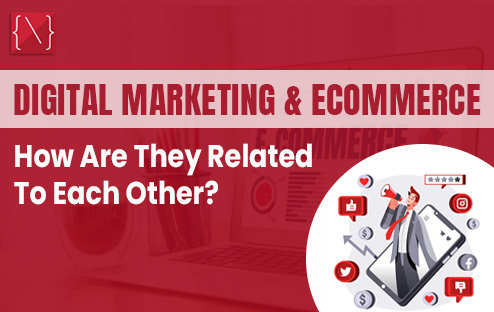
Digital marketing and ecommerce are two buzzwords that have been dominating the business world in recent years. With the rise of technology and internet usage, these two concepts have become crucial for the success of any business, big or small. While some may think that they are separate entities, the truth is that they are deeply interconnected and rely on each other for growth and success.
To understand the relationship between digital marketing and ecommerce, let’s first define both terms. Digital marketing is the use of various digital channels such as social media, search engines, email, and websites to reach and engage with potential customers. On the other hand, ecommerce refers to the buying and selling of goods and services online. It includes everything from online shopping platforms to online banking and other online transactions.
Now, let’s dive deeper into how digital marketing and ecommerce are related to each other.
Increased Reach and Visibility
One of the main goals of digital marketing is to increase a business’s online presence and reach its target audience. With the use of various digital channels, businesses can reach a wider audience than traditional marketing methods. This, in turn, helps to increase brand awareness and visibility. With more people being aware of a brand’s existence, the chances of attracting potential customers and increasing sales also increases.
Ecommerce, on the other hand, provides businesses with a platform to showcase and sell their products or services online. With an ecommerce website, businesses can reach a global audience, expanding their reach and customer base even further. Digital marketing and ecommerce work hand in hand to increase a business’s reach and visibility, making it easier for them to connect with their target audience and potential customers.
Personalization and Targeting
Digital marketing offers businesses the ability to personalize their messages and target specific audiences based on their interests, demographics, and online behavior. This level of personalization helps businesses to create more relevant and tailored marketing campaigns, which, in turn, increases the chances of conversion.
Ecommerce also allows for personalization through features such as product recommendations and personalized offers based on a customer’s purchase history. This enhances the overall shopping experience for customers, making them more likely to return and make repeat purchases. Digital marketing and ecommerce work together to provide a more personalized and targeted approach, making it easier for businesses to attract and retain customers.
Data and Analytics
Digital marketing and ecommerce both rely heavily on data and analytics to measure their success and make informed decisions. With digital marketing, businesses can track and analyze various metrics such as website traffic, social media engagement, email open rates, and more. This data provides valuable insights into customer behavior and preferences, which can be used to optimize marketing strategies and campaigns.
Ecommerce platforms also provide businesses with data on customer behavior, purchase patterns, and more. This data can be used to improve the user experience, optimize product offerings, and make data-driven decisions to increase sales and revenue. The integration of digital marketing and ecommerce allows businesses to gather and analyze data from various sources, providing a more comprehensive understanding of their target audience and market.
Seamless Customer Journey
In today’s digital age, customers expect a seamless shopping experience, whether it’s online or in-store. Digital marketing and ecommerce work hand in hand to provide a smooth customer journey from the initial awareness stage to the final purchase. Digital marketing efforts drive traffic to ecommerce platforms, while ecommerce platforms provide a seamless and convenient buying experience for customers.
Moreover, with the rise of social commerce, where customers can discover and purchase products directly on social media platforms, the line between digital marketing and ecommerce is becoming even more blurred. This integration allows for a more seamless and effortless customer journey, increasing the chances of conversion and customer satisfaction.
In conclusion, digital marketing and ecommerce are two sides of the same coin. They rely on each other to drive business growth and success in today’s digital landscape. As technology continues to evolve, the relationship between these two concepts will only become stronger, making it crucial for businesses to understand and effectively utilize both to stay competitive.
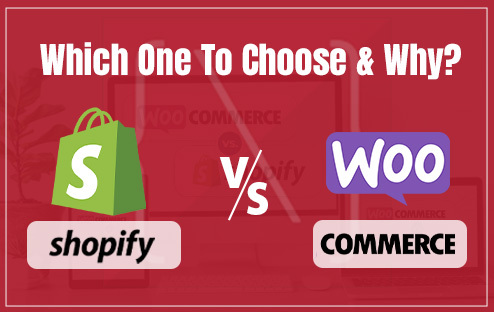
In today’s digital age, having an online presence is crucial for businesses to thrive and reach their target audience. With the rise of e-commerce, more and more businesses are looking to establish an online store to sell their products and services. When it comes to building an e-commerce website, two of the most popular platforms are Shopify and WooCommerce. Both have their own unique features and benefits, but which one is the right choice for your business? In this blog, we will do a thorough comparison of Shopify and WooCommerce and help you make an informed decision on which one to choose.
Shopify is a leading e-commerce platform that allows businesses to easily set up an online store without any technical knowledge or coding skills. It is a fully hosted solution, which means Shopify takes care of all the technical aspects of running an online store, such as hosting, security, and maintenance. With Shopify, you can choose from a variety of stunning templates and customize your website to fit your brand’s aesthetic. It also offers a user-friendly interface and a wide range of features, making it an ideal choice for beginners and small businesses.
On the other hand, WooCommerce is a free, open-source plugin for WordPress, the world’s most popular content management system (CMS). It is a self-hosted solution, which means you will need to purchase a domain, hosting, and SSL certificate to set up your online store. WooCommerce offers a high level of customization and flexibility, making it a preferred choice for businesses with more advanced needs. It also has a large community of developers constantly creating new plugins and extensions to enhance its functionality.
Now let’s dive into the comparison between Shopify and WooCommerce based on some key factors.
1) Ease of Use:
As mentioned earlier, Shopify is a fully hosted solution, which means you don’t need any technical knowledge to set up your online store. It has a user-friendly interface and offers a drag-and-drop builder to customize your website. On the other hand, WooCommerce requires some technical knowledge to set up and customize your website. However, with the help of WordPress tutorials and a little bit of effort, you can easily get the hang of it.
2) Cost:
Shopify offers a variety of pricing plans, starting from $29 per month for its basic plan. It also charges transaction fees for each sale made through your online store. On the other hand, WooCommerce is a free plugin, but you will need to purchase a domain, hosting, and SSL certificate. However, you have complete control over your costs with WooCommerce, and there are no transaction fees.
3) Customization:
Shopify offers a wide range of templates and themes to choose from, but customization options are limited. You can only make changes to the design elements provided by Shopify. On the other hand, WooCommerce offers endless customization options as it is built on WordPress, which is known for its flexibility and customization capabilities.
4) Payment and Shipping Options:
Both Shopify and WooCommerce offer a variety of payment and shipping options. However, Shopify has its own payment gateway, Shopify Payments, which charges lower transaction fees compared to third-party gateways. WooCommerce, on the other hand, offers integration with various payment gateways, giving you more flexibility in choosing the one that works best for your business.
5) Support:
Shopify offers 24/7 customer support through phone, email, and live chat. It also has a dedicated help center with tutorials and guides to help you with any issues. WooCommerce, being an open-source platform, offers community support through forums and documentation. However, you can also purchase premium support from third-party vendors if needed.
In conclusion, both Shopify and WooCommerce have their own strengths and weaknesses. If you’re a beginner or a small business looking for a hassle-free, all-in-one solution, Shopify may be the right choice for you. On the other hand, if you have some technical knowledge and want full control over your website’s customization, WooCommerce may be a better fit. Ultimately, the decision depends on your specific business needs and budget.
If you’re still unsure about which platform to choose, you can always seek the help of an expert. Cleonix Technologies, the best ecommerce website development company in Kolkata, offers expert guidance and services to help businesses build a successful online store on either Shopify or WooCommerce. With our team of experienced developers and designers, we ensure that your e-commerce website is user-friendly, visually appealing, and optimized for conversions. Contact us today to take your e-commerce business to the next level.
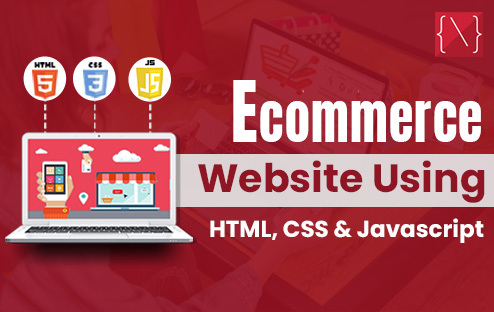
Nowadays establishing an online presence is crucial for businesses looking to thrive in the competitive market. One of the most effective ways to do so is by creating a robust e-commerce website. In this comprehensive guide, we’ll walk you through the process of developing an e-commerce website using the fundamental building blocks of web development: HTML, CSS, and JavaScript.
Understanding the Basics:
Before going through the details of e-commerce development, it’s essential to have a solid understanding of the core technologies involved.
- HTML (Hypertext Markup Language): HTML serves as the backbone of any web page. It structures the content and provides the framework for your website. Start by creating the basic structure of your e-commerce site using HTML tags. Define elements such as headers, footers, navigation bars, and product sections.
htmlCopy code<!DOCTYPE html>
<html lang="en">
<head>
<meta charset="UTF-8">
<meta name="viewport" content="width=device-width, initial-scale=1.0">
<title>Your E-commerce Website</title>
<!-- Additional meta tags, stylesheets, and scripts can be added here -->
</head>
<body>
<!-- Your website content goes here -->
</body>
</html>
- CSS (Cascading Style Sheets): CSS is responsible for the presentation and styling of your HTML elements. Use CSS to define the colors, fonts, layout, and overall visual appeal of your e-commerce site. Create a separate CSS file to maintain a clean and organized code structure.
cssCopy code/* styles.css */
body {
font-family: 'Arial', sans-serif;
background-color: #f4f4f4;
color: #333;
}
/* Additional styling for headers, footers, navigation, and product sections can be added here */
- JavaScript: JavaScript adds interactivity and dynamic behavior to your e-commerce website. It enables features like product filtering, cart management, and real-time updates. Use JavaScript to handle user interactions and create a seamless shopping experience.
javascriptCopy code// script.js
// JavaScript functions for handling dynamic elements and user interactions
Building the E-commerce Structure:
Now that you have a basic understanding of HTML, CSS, and JavaScript, let’s focus on creating the essential components of an e-commerce website.
- Navigation Bar: Design a responsive navigation bar that allows users to easily navigate through different sections of your website. Include links to the homepage, product categories, shopping cart, and user account.
htmlCopy code<!-- Example navigation bar in HTML -->
<nav>
<ul>
<li><a href="#home">Home</a></li>
<li><a href="#categories">Categories</a></li>
<li><a href="#cart">Cart</a></li>
<li><a href="#account">Account</a></li>
</ul>
</nav>
- Product Display: Create a visually appealing layout to showcase your products. Use HTML to structure the product grid and CSS to style it. JavaScript can be employed to implement features such as product filtering, sorting, and displaying real-time updates.
htmlCopy code<!-- Example product grid in HTML -->
<section class="product-grid">
<!-- Product items go here -->
</section>
- Shopping Cart: Implement a functional shopping cart using HTML, CSS, and JavaScript. Allow users to add products, update quantities, and proceed to checkout. Utilize JavaScript to manage the cart state and update the UI dynamically.
htmlCopy code<!-- Example shopping cart in HTML -->
<section class="shopping-cart">
<!-- Cart items and total go here -->
</section>
- Checkout Process: Design a user-friendly checkout process with multiple steps, including shipping details, payment information, and order confirmation. Use JavaScript to validate user inputs and ensure a smooth checkout experience.
htmlCopy code<!-- Example checkout process in HTML -->
<section class="checkout">
<!-- Checkout steps and form fields go here -->
</section>
Optimizing for Performance and Responsiveness:
As you progress with the development of your e-commerce website, consider the importance of performance and responsiveness. Optimize images, minify CSS and JavaScript files, and implement responsive design principles to ensure a seamless experience across various devices.
In conclusion, developing an ecommerce website using HTML, CSS, and JavaScript may seem daunting at first, but with the right planning and knowledge, it can be a rewarding experience. Make sure to do your research, test and debug your website, and seek professional help if needed. And if you’re in Salt Lake, Kolkata don’t hesitate to reach out to CLEONIX TECHNOLOGIES for expert assistance in an ecommerce website development.
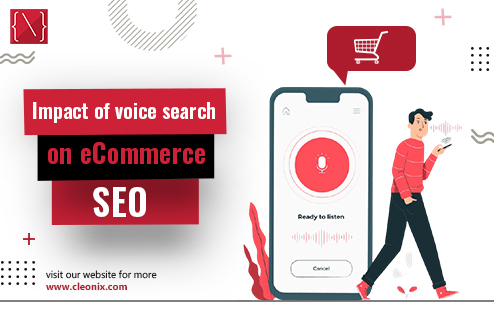
In the ever-evolving landscape of digital marketing, staying ahead of the curve is essential for businesses looking to maintain and enhance their online presence. One of the latest trends reshaping the way consumers interact with the internet is the rise of voice search. As voice-enabled devices like smart speakers and virtual assistants become increasingly popular, their impact on various aspects of online business, particularly eCommerce SEO, cannot be ignored.
The Evolution of Search
Traditional methods of searching, such as typing queries into a search engine, are being complemented and, in some cases, replaced by voice search. The convenience and efficiency of asking a question aloud instead of typing have led to a surge in the adoption of voice-activated devices. Virtual assistants like Amazon’s Alexa, Apple’s Siri, Google Assistant, and Microsoft’s Cortana have become integral parts of people’s daily lives, transforming the way they gather information and make purchasing decisions.
Changing Search Queries
Voice searches tend to differ significantly from text-based searches. When typing a query, users often use concise phrases or keywords, while voice searches tend to be more conversational and natural. For instance, someone might type “best smartphones 2023,” but in a voice search, they might ask, “What are the top-rated smartphones of 2023?” This shift in search behavior has profound implications for eCommerce businesses aiming to optimize their content for search engines.
Long-Tail Keywords Gain Prominence
With the shift towards more conversational queries, the importance of long-tail keywords has increased. These are specific, detailed phrases that users are more likely to use in voice searches. Businesses must adapt their SEO strategies to incorporate these longer, more natural phrases to ensure their products and services are discoverable in voice search results.
Local SEO and Mobile Optimization
Voice searches are often location-specific, with users asking questions like “Where is the nearest electronics store?” This emphasizes the need for robust local SEO strategies for eCommerce businesses. Ensuring that your business’s information is accurate and up-to-date on platforms like Google My Business is crucial for capturing local voice search traffic.
Additionally, mobile optimization plays a significant role, as many voice searches occur on mobile devices. A seamless and mobile-friendly website becomes even more critical to providing a positive user experience and ranking well in voice search results.
The Rise of Featured Snippets
Voice search results are often drawn from featured snippets – concise, information-packed answers that appear at the top of search engine results. Structuring content to provide clear, concise answers to common questions related to your products or services increases the likelihood of your content being featured in voice search results, thereby boosting your visibility and credibility.
Conversational Content is Key
To align with the more conversational nature of voice searches, eCommerce websites need to create content that feels natural when spoken aloud. This involves not only integrating long-tail keywords but also adopting a tone that mimics how people ask questions in real-life conversations. User-friendly, conversational content enhances the overall user experience and increases the chances of being favored by voice search algorithms.
Optimizing Product Information for Voice Search
As voice searches become more prevalent in eCommerce, it’s crucial to optimize product information for this shift in user behavior. This includes creating detailed product descriptions using natural language, incorporating relevant long-tail keywords, and ensuring that your product information is easily digestible for voice-activated devices.
The Future of eCommerce SEO
The impact of voice search on eCommerce SEO is undeniable, and businesses that embrace and adapt to this change will undoubtedly have a competitive advantage. Staying informed about emerging trends, understanding evolving consumer behavior, and continuously optimizing online content for voice search are key strategies for eCommerce success in this dynamic digital landscape.
In conclusion, as voice search continues to reshape the digital landscape, eCommerce businesses must evolve their SEO strategies to remain visible and competitive. By understanding the changing nature of search queries, focusing on local SEO, optimizing for mobile devices, and creating conversational content, businesses can position themselves to thrive in the era of voice-activated search. Embracing these changes today will not only enhance current SEO efforts but also future-proof online businesses in the evolving world of eCommerce.
ALSO READ: Role of UX Design in eCommerce Website Development
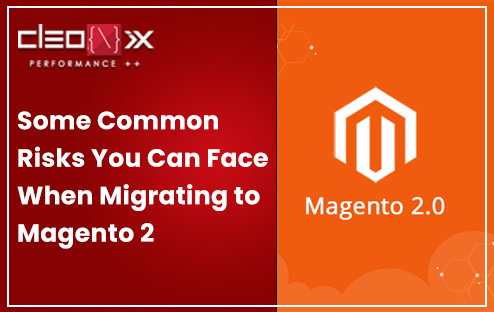
Magento 2 is a popular eCommerce platform that offers businesses the ability to manage their online stores with ease. However, migrating to Magento 2 can be a daunting task, and there are many potential risks that businesses should be aware of before undertaking the migration process. In this blog post, we will discuss some common risks you can face when migrating to Magento 2 and provide some tips on how to mitigate them.
Data Loss
One of the most significant risks when migrating to Magento 2 is data loss. During the migration process, data can be lost due to various reasons, such as improper data mapping or incorrect data formatting. To mitigate this risk, it is essential to back up your data before starting the migration process. You should also perform a thorough data audit to identify any potential data issues and work to resolve them before the migration begins.
Downtime
Another common risk when migrating to Magento 2 is downtime. Downtime can occur when your website is unavailable due to maintenance or other issues, which can lead to a loss of revenue and damage to your brand reputation. To avoid downtime, you should plan your migration carefully and schedule it during a time when your website has the least traffic. Additionally, it is essential to work with experienced developers who can minimize downtime and ensure a smooth migration.
Extension Incompatibility
Magento 2 has a different architecture than Magento 1, and as a result, extensions that worked on Magento 1 may not be compatible with Magento 2. This can cause problems during the migration process, such as functionality loss or website crashes. To mitigate this risk, it is essential to identify all the extensions you are currently using and ensure that they are compatible with Magento 2. You may also need to find alternative extensions that are compatible with Magento 2 to replace any that are not.
Customization Issues
Another risk when migrating to Magento 2 is customization issues. If you have customized your website extensively, you may encounter issues during the migration process. Customizations that are not properly migrated can lead to website crashes, functionality loss, and other issues. To mitigate this risk, it is essential to thoroughly document all your customizations and work with experienced developers who can ensure that your customizations are properly migrated to Magento 2.
Cost Overruns
Migrating to Magento 2 can be costly, and there is a risk of cost overruns. This can happen due to unexpected issues during the migration process or changes in the scope of the project. To mitigate this risk, it is essential to create a detailed migration plan and budget that includes all the necessary resources and potential costs. You should also work with experienced developers who can help you identify potential cost overruns and find ways to minimize them.
SEO Issues
SEO is critical for any eCommerce website, and there is a risk of SEO issues when migrating to Magento 2. If not properly managed, the migration process can result in a loss of SEO ranking, which can lead to a significant decrease in traffic and revenue. To mitigate this risk, it is essential to work with experienced developers who can ensure that all your SEO settings are properly migrated to Magento 2. You should also perform a thorough SEO audit after the migration to identify and resolve any potential issues.
Training Issues
Migrating to Magento 2 can be a significant change for your team, and there is a risk of training issues. If your team is not properly trained on Magento 2, they may struggle to use the platform effectively, which can lead to a loss of productivity and revenue. To mitigate this risk, it is essential to provide your team with comprehensive training on Magento 2 before and after the migration. You should also work with experienced developers who can provide guidance and support during the training process.
In conclusion, migrating to Magento 2 can be a complex process, and there are several risks involved. However, with careful planning and the help of experienced developers, businesses can mitigate these risks and ensure a successful migration. It is essential to perform a thorough data audit, identify potential issues, and create a detailed migration plan and budget that includes all the necessary resources and potential costs. Working with experienced developers who can minimize downtime, ensure proper data migration, and provide comprehensive training for your team is also crucial. By taking these steps, businesses can make the transition to Magento 2 with confidence and avoid the potential risks that come with the migration process.
READ ALSO: Tips to Optimize Magento Cart Page for Better Conversion Rate
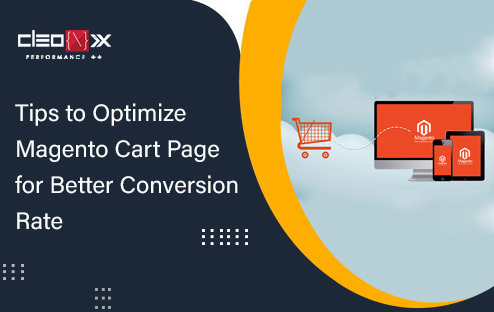
Magento is a PHP based open-sourced e-commerce platform. It helps you to easily setup your online store with very minimum work. Today, around 12% of the total e-retailers across the world is using Magento for their online store. However, if you are an online retailer, you know that using Magento or having a good website does not necessarily mean high conversion rates. Many e-commerce businesses often face the problem of cart abandonment due to various issues like slow check out process, long loading time and unsafe payment gateways. It is one of the major problems that e-commerce businesses should look after as low conversion rates can lead to huge losses. Today, we discuss some of the ways which can help you to optimize Magento based cart pages so that it can lead to higher conversion rates.
Optimizing Loading Time
Loading time is one of the major problems that can affect your whole website. According to statistics, most people wait around a maximum of 3 – 5 seconds for a page to load. If your website or cart page takes a longer time to load, it is causing people to bounce off your website, leading to low conversion rates. You can take easy measures to ensure faster loading time for your cart page like compressing images and assets size, removing third-party scripts and optimizing cookies.
Faster Check-Out Process
Creating a simple and fast check-out process is another important element for improving your conversion rate. While designing your website, you should keep the click count between your product and check out page as minimum as possible. Also, remove any unnecessary pages in between. A faster check out process also ensures a better user experience which will lead to higher conversion rates.
Personalized Data
Magento provides users with features like auto-fill or pre-filled data. You can use these features to provide a more personalised shopping and check out experience to your customers. This can help to increase the conversion rate of your website. You can use information like mail-id, name and addresses, entered during account creation, to be pre-filled at the checkout or billing page so that customers can have a smooth and faster check out.
Add Reviews and Ratings
One of the major ways to increase conversion rate is to earn customer trust. With Magento you can display product reviews and ratings to add credibility to your website and products. This way customers can understand that it is actually safe to buy products from you. Also use popular and trusted payment portals for online payment process like PayPal, Stripe, etc, so that people know it is safe and secure.
Time Limited Promo Codes
Offering promo codes is one of the biggest ways to retain your customers and increase conversion rates. They are very attractive to customers and easy to implement. According to statistics, around 30% of people will purchase a product after getting a promo code even if they did not intent to buy it in the first place. Offering limited time promo codes at the checkout page also creates a sense of urgency, compelling customers to buy products from you quickly, leading to higher conversion rates.
Although selling strategies depend and varies according to the store, type of products, and the people you are targeting, you can easily try out the points we have mentioned and implement them at any kind of Magento based stores.
Also Read: Shopify or Magento Which One to Choose For Your eCommerce Development

Landing page, perhaps, is the most crucial element of a business website. A landing page layout can simply determine how well the business will thrive in the online space. if you own a business company and have your brand available on the digital sphere, then you must be able to create an attractive landing page to increase customers and sales numbers. Therefore, in this blog, we’ll explore the different ways you can create an attractive landing page for your business to increase traffic to your website. Watch out.
Landing Page – What It Does
Before getting into the specific details, let’s understand, in brief, what a landing page is about. It is that page of a particular website that you land on whenever you click an ad on search engines or social media sites. For example, if you own an online e-commerce store, then the landing page of your e-commerce website should have all the information about your website, its’ products, how to purchase them, the feedbacks, specific offers, and many more. Thus, a landing page has pretty much all the necessary details about that particular website.
Create Attractive Landing Page to Increase Sales
To increase the conversion rate of a business, it is necessary to understand the nuances of an attractive landing page and how to create one. Here are some ways you can create an effective landing page.
Keep the Page Clean
Nothing can be more attractive than a clean and fast-loading landing page. No matter how interesting your website content and offers are, if it takes longer to arrive on the landing page, then it’s a waste already. To ensure seamless landing, you must keep the page uncluttered and organized. A clumsier landing page turns down the viewers as they fail to find what they want, easily. Keep it simple with relevant images and color tones.
Focus on the Content
Be precise with the content of your landing page. Try to avoid flowery and exaggerated statements that might not match with your products, services, or the brand. Keep the language as simple as possible so that viewers of all strata can understand and relate. Define your business goal with less words and try catchy one-liners to attract the eyes of the customers.
Gain Customer Trust
Customer trust is the ultimate factor that can decide how well would your business survive. Even if they click the ad and arrive on the landing page, if you cannot build their trust at the first glance, then that click will never convert into a purchase. The best way to gain the trust of the customer is to add real-time buyer reviews, testimonials, and appreciation posts from other brands. You can also add other brands’ logos with whom you have collaborated, on your landing page.
Add Attractive Offers
What interesting elements are you offering your customers when they come to the landing page of your website? Ask yourself this question before designing the page. When a viewer visits your website, he/she might have expected some interesting offers that other similar stores are probably not providing. Therefore, grab your customers’ attention by adding attractive offers. If they find your offer alluring, then your conversion rate will increase automatically.
The Bottom Line
Creating an attractive landing page is quite an easy job if you know what to keep and what not to. It is an amazing marketing method that can increase the conversion rate of your online business and help building your brand image while increasing the sales figure.
Read Also: How Web Design and Development Can Amplify Your Business?

The online shopping market is growing at an exponential rate. Especially over 2 billion people have shopped online during the pandemic period. In fact, eCommerce stores have crossed 4.7 billion sales worldwide. The prime factor behind this exponential rise has to be the lockdown impositions in various countries. So, if you enter this eCommerce platform and hit the hot iron, congratulations; You have made the right choice.
But in order to achieve success, your company will need a robust platform to sell its goods and services. Magento and Shopify are two of the best in the market for creating eCommerce websites. Each of them provides us with various features and functionalities that cater to a specific type of business. Therefore, in this blog, we will discuss everything you need to know about Shopify and Magento. This will provide you with the proper insight regarding which one to choose for your eCommerce development.
Magento Vs. Shopify: What Are They?
Introduced in 2008, Magento is an open-source highly customizable eCommerce platform. It works like a Content Management System (CMS) and shopping cart platform. The users can create customizable eCommerce websites based on their business preferences and choice.
Shopify is also an eCommerce platform founded in 2006 by Scott Lake, Daniel Wienand, and Tobias Lutke. It allows users to create powerful eCommerce websites that will help to acquire more customers. So, with Shopify, your company can generate more sales and you can manage your daily activities much more efficiently.
The Main Difference Between Shopify & Magento
Ease Of Use
This has to be the first criteria when you decide to choose an eCommerce platform. Without the ease of use, your business can face a lot of issues regarding technicality and flexibility. From creating a website to managing and maintaining it, an easy to use website can save you time and effort. Most importantly, ease of use can directly impact your website’s performance and sales figures.
Magento: The ease of use curve with Magento is quite steep to start your eCommerce journey. Yes, the interface is clean and responsive. But to design a powerful website, you need to have coding knowledge for management and store creation.
Shopify: When compared to Magento, Shopify is much easier to use. You don’t need to have any expert knowledge to create an eCommerce website, manage, and maintain it. The user interface provides the user with a functionality called “drag-and-drop”, which makes the creation process much easier.
Final Words
Selecting the right eCommerce platform is extremely important for the success of your online business. However, between Shopify and Magento, the main difference comes down to ease of use. If you are someone who can afford to hire a developer to do the website designing process, go for Magento. Otherwise, Shopify is the best option available for you in the current market.
Also Read: Business benefits of Laravel development services
About the author
Cleonix Technologies
A professional Web Development Company is highly focused on providing world class and best in the industry standard services in every domain that we work upon.

 AJ 14, Salt Lake, Sector 2, Kolkata - 700091 |
AJ 14, Salt Lake, Sector 2, Kolkata - 700091 |  743 Virginia Ave NE Atlanta, GA 30306
743 Virginia Ave NE Atlanta, GA 30306










